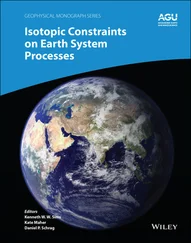
1 Cover
2 Preface to the 2nd Edition Preface to the 2nd Edition It is now more than a decade since the first edition of this book appeared, during which time a great deal has happened in furthering the knowledge of metallogeny and earth system science. Our understanding of global tectonic processes and the nature of crustal evolution continues to influence the practice of economic geology and assists in maintaining the supply of natural resources in a responsible and sustainable way. The economies of developing nations continue to grow so that a greater proportion of people than ever before enjoy the benefits of a lifestyle that befits the twenty‐first century. However, the global economy, and the natural resources industry in particular, remain cyclical in that security of supply of strategically important commodities has become a major problem – one result of this is the identification of “critical metals” whose supply cannot be regarded as sustainable in the short or medium term. Despite the fact that new metallotects are still being discovered – and even exploration for metals in the deep ocean and outer space mooted – the replenishment of depleted natural resources is becoming more difficult and environmentally demanding. In order to mitigate these problems, the responsible custodianship of natural resources is more necessary than ever before and there is a continuing need for all earth scientists to understand metallogeny and the resource cycle. The 2nd edition of Introduction to Ore‐Forming Processes has been updated to play a role in meeting these demands. The book is still introductory in nature and the basic structure and layout remain unchanged – all sections have, however, been updated and expanded with respect to research undertaken since it first appeared. My grateful thanks are to Brian Skinner, Steve Kesler, Charlie Moon, Michael Meyer, and Judith Kinnaird who provided valuable commentary on the revised content for the 2nd edition. My own development as an economic geologist has benefited over the past decade or more by collaboration with geoscientists that include Mike Searle, Dave Waters, Chris Hawkesworth, Nick Gardiner, Judith Kinnaird, and Paul Nex. This book was originally conceived in a very different format. The 2nd edition is dedicated to Professor John Moore (1946–2011), Rhodes University, whose perceptive suggestions led to the process‐related approach of the present content, and which contributed in no small measure to its success. Laurence Robb Oxford
3 Preface to the 1st Edition
4 Introduction: Mineral Resources Introduction and Aims A Classification Scheme for Ore Deposits What Makes a Viable Mineral Deposit? Some Useful Definitions and Compilations Natural Resources, Sustainability, and the Environment Summary Further Reading
5 Part I: Igneous Processes 1 Igneous Ore‐Forming Processes 1.1 Introduction 1.2 Magmas and Metallogeny 1.3 Why Are Some Magmas More Fertile than Others? The “Inheritance Factor” 1.4 Partial Melting and Crystal Fractionation as Ore‐Forming Processes 1.5 Liquid Immiscibility as an Ore‐Forming Process 1.6 A More Detailed Consideration of Mineralization Processes in Mafic Magmas 1.7 A Model for Mineralization in Layered Mafic Intrusions 1.8 Summary Further Reading 2 Magmatic‐Hydrothermal Ore‐Forming Processes 2.1 Introduction 2.2 Some Physical and Chemical Properties of Water 2.3 Formation of a Magmatic Aqueous Phase 2.4 The Composition and Characteristics of Magmatic‐ Hydrothermal Solutions 2.5 A Note on Pegmatites and Their Significance to Granite‐ Related Ore‐Forming Processes 2.6 Fluid–Melt Trace Element Partitioning 2.7 Water Content and Depth of Emplacement of Granites – Relationships to Ore‐Forming Processes 2.8 Models for the Formation of Porphyry‐Type Cu, Mo, and W Deposits 2.9 Near‐Surface Magmatic‐Hydrothermal Processes – The “Epithermal” Family of Au–Ag–(Cu) Deposits 2.10 Skarn Deposits 2.11 Fluid Flow in and Around Granite Plutons 2.12 The Role of Hydrothermal Fluids in Mineralized Mafic Rocks 2.13 Summary Further Reading
6 Part II: Hydrothermal Processes 3 Hydrothermal Ore‐Forming Processes 3.1 Introduction 3.2 Other Fluids in the Earth's Crust and Their Origins 3.3 The Movement of Hydrothermal Fluids in the Earth's Crust 3.4 Additional Factors Affecting Metal Solubility 3.5 Precipitation Mechanisms for Metals in Solution 3.6 Fluid–Rock Interaction – Introduction to Hydrothermal Alteration 3.7 Metal Zoning and Paragenetic Sequence 3.8 Modern Analogues of Ore‐Forming Processes – The VMS–SEDEX Continuum 3.9 Mineral Deposits Associated with Aqueo‐Carbonic Metamorphic Fluids 3.10 Ore Deposits Associated with Basinal Fluids 3.11 Ore Deposits Associated with Near Surface Meteoric Fluids (Groundwater) 3.12 Summary Further Reading
7 Part III: Sedimentary/Surficial Processes 4 Surficial and Supergene Ore‐Forming Processes 4.1 Introduction 4.2 Principles of Chemical Weathering 4.3 Lateritic Deposits 4.4 Clay Deposits 4.5 Calcrete‐Hosted Deposits 4.6 Supergene Enrichment of Cu and Other Metals in the Near Surface Environment 4.7 Summary Further Reading 5 Sedimentary Ore‐Forming Processes 5.1 Introduction 5.2 Clastic Sedimentation and Heavy Mineral Concentration – Placer Deposits 5.3 Chemical Sedimentation – Iron‐Formations, Phosphorites, and Evaporites 5.4 Fossil Fuels – Oil/Gas Formation and Coalification 5.5 Summary Further Reading Sedimentology and Placer Processes Chemical Sedimentation and Ore Formation Fossil Fuels
8 Part IV: Global Tectonics and Metallogeny 6 Ore Deposits in a Global Tectonic Context 6.1 Introduction 6.2 Patterns in the Distribution of Mineral Deposits 6.3 Continental Growth and the Supercontinent Cycle 6.4 Geological Processes and Metallogenesis 6.5 Metallogeny Through Time 6.6 Plate Tectonic Settings and Ore Deposits – A Summary 6.7 Summary Further Reading
9 References
10 Index
11 End User License Agreement
1 f05 Table 1 Average crustal abundances for selected metals and typical concentra...
2 Chapter 1 Table 1.1 A comparison of the value of mineral production from igneous and se... Table 1.2 Average abundances of selected elements in the major magma types. Table 1.3 Estimates of sulfide–silicate partition coefficients for base and p...
3 Chapter 2Table 2.1 Typical solute concentrations (in mg kg −1or ppm) of the main...Table 2.2 Selected metal contents (in ppm) of fluid inclusions from a variety...Table 2.3 Characteristics of high‐ and low‐sulfidation epithermal deposits.
4 Chapter 3Table 3.1 Representative concentrations (in ppm) of major ionic species in n...Table 3.2 Classification of some metals and ligands in terms of Lewis acid/b...Table 3.3 The “Emmons Reconstructed Vein” concept showing empirical observat...
5 Chapter 5Table 5.1 Average chemical compositions (in wt%) of the main organic building...Table 5.2 Coal classification in terms of maceral groups and lithotypes.
1 f05 Figure 1 (a) Classification of the principal rock types and (b) a simple cl... Figure 2 Plot of global production against crustal abundances for a number ... Figure 3 Simplified scheme illustrating the conceptual difference between m... Figure 4 Periodic table showing the elements with atomic numbers from 1 to ... Figure 5 Geological time scale after the International Commission on Strati... Figure 6 Global production trends for oil (a), bauxite (b), copper (c), and...
2 Chapter 1 Figure 1.1 Oceanic crustal architecture showing the main types of ore deposi.
Читать дальше













